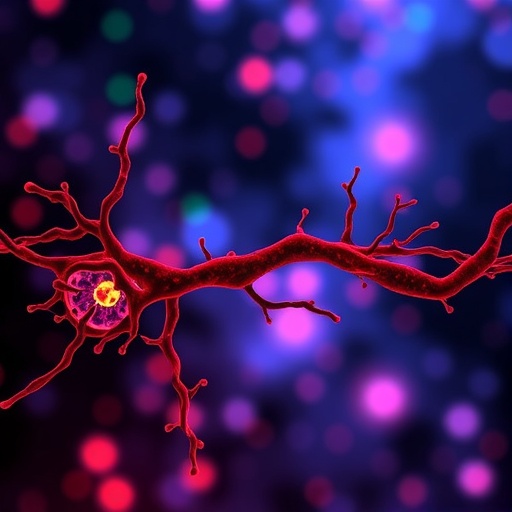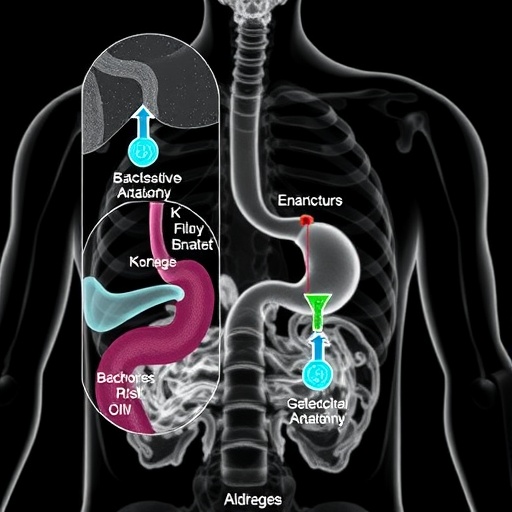Using a computational model, researchers were able to explain, predict, and even manipulate the regeneration of the flatworm body
Credit: Alexis Pietak & Mike Levin, Tufts University
MEDFORD/SOMERVILLE, Mass. (April 25, 2019)– Biologists at Tufts University have developed a computational model of planarian (flatworm) regeneration that explains how fragments of planaria determine which end should form a tail and which should form a head. The development begins to answer an important question in regeneration research – what are the signals that determine the rebuilding of specific anatomical structures? Combining modeling and experiment, the researchers determined that the direction of nerve fibers sets the redistribution of chemical signals establishing the direction of the head-to-tail axis. The model was also able to predict the outcomes of numerous genetic, pharmacological, and surgical manipulations, such as worms with two heads or two tails.
The results published in the journal PLOS Computational Biology go beyond planaria, showing how computational modeling of physiological and genetic signals can help understand and control regeneration. The discovery that neural directionality helps guide organ-level structure could have many applications in biomedical contexts, such as regeneration in mammals, birth defects, bioengineering of organoids, and cancer.
The computational model, using a new open-source simulation platform called the Planarian Interface for Modeling Body Organization (PLIMBO), incorporates many biological mechanisms driving regeneration – some published previously, and others discovered in the current study. This computational environment creates a realistic quantitative simulation of events taking place at the molecular, cellular, tissue, and whole organism levels. The model helped identify the important role neurons play in regeneration by providing active transport of morphogens – the molecules that help guide the growth and organization of cells into different tissues and anatomical structures. The researchers found that neurons played a critical role in reconstructing the polarity of the body plan (head to tail), as well as ensuring that morphogens could be rapidly distributed to enable the regeneration process to work effectively at different scales – from tiny fragments to complete bodies.
The model is basically a 2-dimensional map of a planarian body, in which important signaling molecules such as Hh, NRF, ERK, Wnt, cAMP, beta-Cat, Ptc and APC, each follow their own rules of production, distribution and transport along cellular paths, and interact with each other. To better understand the regeneration process, the authors examined the calculated results of cutting out portions of the map, inhibiting transport of the virtual morphogens, and/or perturbing the production of specific morphogens. The results of these interventions were then examined experimentally by physical excision in the worm, and exposure to RNAi or pharmacological treatments, which can decrease or increase the biological production of specific morphogens.
While it has been known for decades that neurons are in some way important for regenerative capacity, this is the first study that reveals that it is neural directionality that specifically instructs subsequent redistribution of biochemicals that determine the anatomical polarity of a major body axis. This shows how ordered pattern arises at the single cell scale and is propagated to tissues and organs.
“The model did remarkably well in predicting the actual biological outcomes in the worm,” said Michael Levin, Ph.D., Vannevar Bush Professor of Biology in the School of Arts & Sciences and director of the Allen Discovery Center at Tufts. “It enabled us to visualize how patterning information can percolate up from the cell- to the organism-level, and how directionality of specific cells (such as neurons) drive downstream biochemical gradients and organ determination. The model enabled us to make accurate predictions of new experiments that had never been done before, revealing that neural directionality trumps (and re-sets) pre-existing biochemical gradients.”
Neural direction guides polarity in regeneration by serving as a rapid conduit for certain morphogens. Neurons contain within them a system of “tracks” called microtubules, and molecular “engines” that transport molecules along those tracks. The engines include dynein and kinesin, and inhibiting either of those molecules can lead to regeneration anomalies predicted by the model. Novel experiments showed, as predicted by the model, that pre-existing gradients of chemicals in fragments did not set the direction of the head and tail axis, but rather were re-written by the directionality of neuron fibers.
“PLIMBO permits us to examine regeneration in a quantitatively rigorous manner,” said lead author Alexis Pietak, the biophysicist who devised the model and member of the Allen Discovery Center. “We can fill in gaps in knowledge by simulating the role of neurons and novel morphogens and seeing if they improve the ability to predict experimental outcomes. This can provide us with not only a better understanding into the process of regeneration, tissue and organ formation but also insights into how body patterns could be disrupted in other animals during gestation, leading to birth defects.”
###
Other authors of the study include Johanna Bischof, post-doctoral scholar, Joshua LaPalme, research technician, and Junji Morokuma, research associate of the Allen Discovery Center at Tufts University.
This work was supported by an Allen Discovery Center award from The Paul G. Allen Frontiers Group (12171), the National Institutes of Health (AR055993, AR061988, S10 OD021634), the G. Harold and Leila Y. Mathers Charitable Foundation (TFU141), National Science Foundation award #CBET-0939511, the W. M. KECK Foundation (5903), and the Templeton World Charity Foundation (TWCF0089/AB55). The content is solely the responsibility of the authors and does not necessarily represent the official views of the National Institutes of Health.
Pietak A, Bischof J, LaPalme J, Morokuma J, and Levin M, “Neural control of body-plan axis in regenerating planaria,” PLoS, DOI: 10.1371/journal.pcbi.1006904
About Tufts University
Tufts University, located on campuses in Boston, Medford/Somerville and Grafton, Massachusetts, and in Talloires, France, is recognized among the premier research universities in the United States. Tufts enjoys a global reputation for academic excellence and for the preparation of students as leaders in a wide range of professions. A growing number of innovative teaching and research initiatives span all Tufts campuses, and collaboration among the faculty and students in the undergraduate, graduate and professional programs across the university’s schools is widely encouraged.
Media Contact
Mike Silver
[email protected]
Related Journal Article
http://dx.




